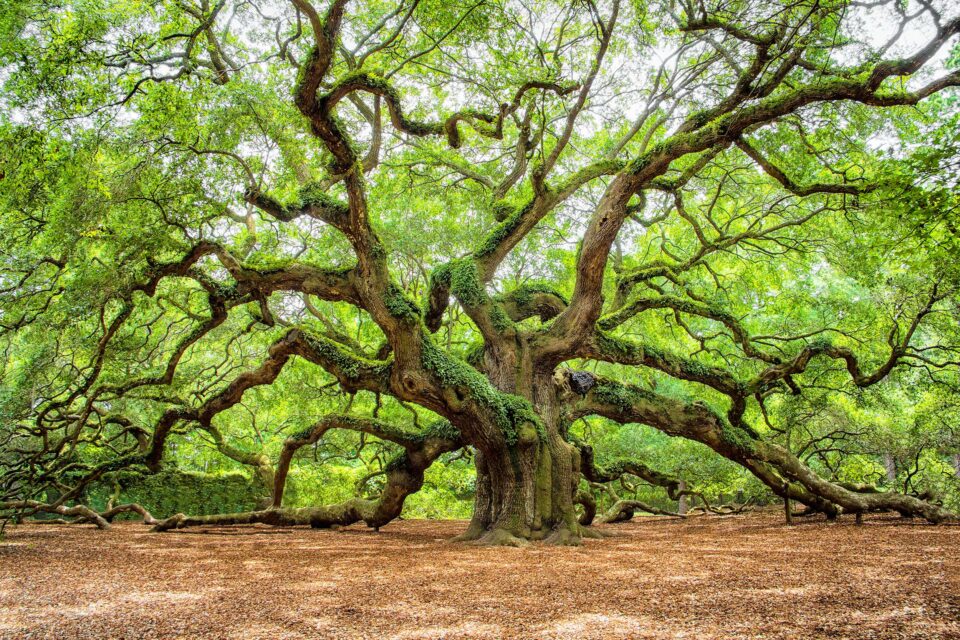Should we cut down all the oak trees? A disturbing discovery makes this question plausible

At the forefront of environmental discussions at Michigan State University, Tom Sharkey, a University Distinguished Professor at the Plant Resilience Institute, posed a provocative question:
“Should we cut down all the oak trees?”
While he wasn’t advocating for a literal deforestation of oaks, this theoretical question emerges from his team’s recent discoveries about the role of trees, especially oaks and poplars, in air pollution dynamics.
The isoprene conundrum
Sharkey’s research delves into the intricacies of isoprene — a compound released by certain plants, particularly oaks and poplars.
This research reveals a paradox. On one hand, with global temperatures rising, these trees emit more isoprene which, when interacting with pollutants like nitrogen oxide, exacerbates poor air quality by contributing to particulate matter and low-atmosphere ozone.
On the other hand, isoprene bolsters the plants’ resistance against environmental stressors such as insect attacks and high temperatures.
This double-edged sword leads Sharkey to ask, “Do we want plants to make more isoprene so they’re more resilient, or do we want them making less so it’s not making air pollution worse? What’s the right balance?”
A behind-the-scenes villain
Despite isoprene being the second-largest emitted hydrocarbon on Earth — trailing only behind methane emissions from human activities — its significant impact on the environment remains relatively unknown to the general public. Sharkey, who has studied isoprene since his doctoral days at Michigan State in the 1970s, sheds light on its importance and the challenges it presents.
Interestingly, this isn’t the first time trees have been implicated in air pollution discussions. In the 1980s, then-president Ronald Reagan controversially claimed that trees produced more air pollution than cars. This statement, although exaggerated, contained a nugget of truth regarding the role of isoprene.
As Sharkey explains, “There’s this interesting phenomenon where you have air moving across a city landscape, picking up nitrogen oxides, then moving over a forest to give you this toxic brew.”
Science behind isoprene production
Backed by the National Science Foundation, Sharkey’s team delves deeper into the mysteries of isoprene production. Prior to their research, it was known that isoprene production was affected by photosynthesis and that global changes were causing contrasting effects on its emission. While increased carbon dioxide reduced isoprene production, higher temperatures accelerated it.
The recent study, however, has finally unveiled the specifics of this dynamic. Lead author Abira Sahu stated, “We were looking for a regulation point in the isoprene’s biosynthesis pathway under high carbon dioxide… And, finally, we have the answer.”
The team’s findings suggest that the effect of rising temperatures vastly overshadows that of carbon dioxide. As Sharkey notes, “By the time you’re at 95 degrees Fahrenheit — 35 degrees Celsius — there’s basically no CO2 suppression. Isoprene is pouring out like wild.”
The path forward
The discoveries of Sharkey’s team have significant implications for future climate predictions and planning. Understanding the volume of isoprene emissions is crucial for anticipating air quality and designing appropriate mitigation strategies. Mohammad Mostofa, another contributor to the study, emphasized this, saying, “We could be doing a better job.”
For institutions like MSU, with a vast expanse of over 20,000 trees, the findings could influence decisions about future plantings to potentially reduce isoprene emissions. However, Sharkey offers a more immediate solution that doesn’t involve cutting down trees. He suggests improved control of nitrogen oxide pollution as a key countermeasure.
This comprehensive research, with contributions from experts like Sarathi Weraduwage, an assistant professor at Bishop’s University in Quebec, provides crucial insights into the balance between environmental quality and plant resilience. It underscores the importance of informed choices in the face of a warming planet.
The full paper was published in the renowned journal Proceedings of the National Academy of Sciences.









